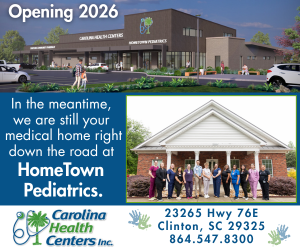Charleston one of fastest growing U.S. markets
February 15, 2017The Charleston market is establishing itself as one of the fastest growing markets in the Southeast and nation. The growth is fueled by Charleston’s ability to attract new labor to the market’s high quality of life.
The desirability of Charleston is sustaining economic growth across all sectors. Asking rates and land prices on the Peninsula surpass most markets in the Southeast, prompting rapid expansion in the suburbs.
Recent port expansions and the introduction of new distributors and manufacturers helped drive job and population growth in the region much faster than the national average and resulted in the fastest population growth (9.6%) in the Southeast.
The expanded Panama Canal will continue to create new trade opportunities, attracting new distributors from the West Coast looking to diversify their operations.
Strong market fundamentals, increasing demand and tight vacancies will continue to draw the attention of outside investors and developers looking to capitalize in tertiary markets.
Office
Charleston’s office sector is experiencing one of the lowest vacancy rates and one of the highest asking rates in the Southeast. The historic district in the heart of Charleston’s CBD presents a unique dynamic. While the demand for new construction on the Peninsula is high, development remains extremely limited due to the lack of space and building restrictions. Rates will continue to rise in the face of rapid business and population growth.
While the market continues to see tenants willing to pay the premium for locations on the Peninsula, development will be pushed into suburban submarkets to deliver new Class A space, aiming to meet the needs of occupiers requiring larger footprints. Investors are attracted to Charleston’s market fundamentals and low cap rates.
Industrial
Charleston’s industrial sector has the distinct advantage in labor cost and transportation. In addition to having access to one of the fastest growing ports in the U.S., Charleston is diversifying its industrial sector into manufacturing. Large manufacturers, primarily in the aerospace and automotive industries, are expanding the market’s perceived geographic limits. In future years, expect to see additional new construction along the I-26 corridor as increasing interest of automotive suppliers strategically position themselves near Volvo, Daimler and Boeing.
Vacancy rates are near historic lows and the long-term outlook for the market has developers actively bringing speculative development to the market. Adding more fuel to the fire is the fact that asking rates are also on the rise having experienced a record in 2016.
As higher returns are realized and port expansions are completed, Charleston’s investment activity will likely increase in the foreseeable future.
Retail
Nationally, retail is the slowest sector to recover from the recession. Charleston confidently defies this trend in both the downtown tourism district and suburban submarkets. Demand for retail space in downtown continues on a very strong pace. As the population increases and economy expands, asking rates and strike rates are hitting unseen peaks along King Street. Landlords angle to secure tenants able to pay rents that are routinely double what existing tenants are paying.
Mount Pleasant, Daniel Island and Summerville are growing rapidly as businesses relocate in the suburbs and residents seek affordability. Retail development will continue along I-26 and into once predominately industrial submarkets.
Hotels
In recent years, favorable lodging supply and demand conditions have resulted in market area occupancies in the low 70% range slightly higher than the historic average for Charleston. Despite the positive market conditions, Charleston has not experienced a significant increase in hotel supply on the Peninsula, primarily due to building restrictions.
Alternatively, new hotel construction outside the historic district has resulted in a sizeable development pipeline with over 40 hotels in various stages of planning with most interest concentrated in the Charleston/West Ashley submarket.
The market is expected to maintain its strong occupancy rates based on sustained leisure visitation and continued addition to the commercial base.
Multifamily
High rent growth and low vacancies make multifamily the top investment product in the Charleston market. Downtown rents have increased 30% in the last five years and are not expected to slow down anytime soon, as the area’s population continues to grow, particularly among its younger workforce who are highly interested in living in Charleston dynamic downtown.
Charleston’s demand for new apartment construction is intensifying and rapid rent growth makes the multifamily sector attractive. Nationally, urban living is trending. Despite its relative small market size, Charleston is benefitting from this movement due to the residential choices of Millennials and Baby Boomers, who make up over 40% of Charleston’s population.
Developers are generating strong returns complicating development in other sectors.
Download the report here. http://www.cbre.us/o/charlestonsc/Pages/market-reports.aspx
About CBRE Group, Inc.
CBRE Group, Inc. (NYSE:CBG), a Fortune 500 and S&P 500 company headquartered in Los Angeles, is the world’s largest commercial real estate services and investment firm (based on 2015 revenue). The Company has more than 70,000 employees (excluding affiliates), and serves real estate investors and occupiers through more than 400 offices (excluding affiliates) worldwide. CBRE offers a broad range of integrated services, including facilities, transaction and project management; property management; investment management; appraisal and valuation; property leasing; strategic consulting; property sales; mortgage services and development services. Please visit our website at www.cbre.com.

















